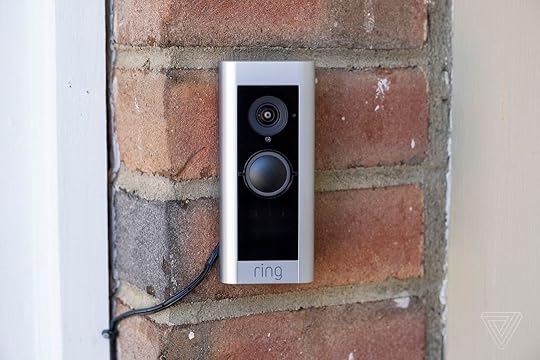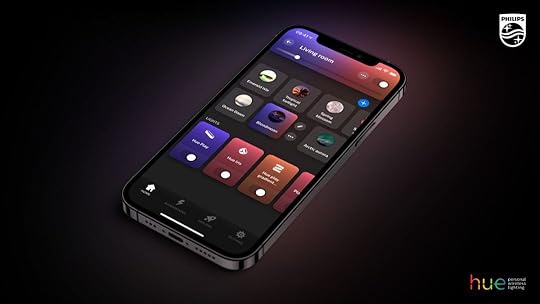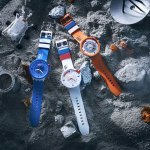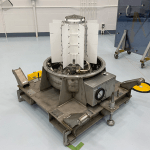Dominique Luchart's Blog, page 606
June 3, 2021
WhatsApp says accounts will soon be usable across up to four devices, Jon Porter

 Illustration by Alex Castro / The Verge
Illustration by Alex Castro / The VergeWhatsApp has confirmed that its long-rumored multi-device support will be entering public beta in the coming months, allowing users to access their accounts from up to four linked devices. New “view once” and “disappearing mode” features were also officially announced. The news came in an interview between WABetaInfo and Facebook CEO Mark Zuckerberg and WhatsApp head Will Cathcart.
Cathcart stopped short of confirming reports that WhatsApp has an iPad app in development, but said that multi-device support will make WhatsApp on iPad a possibility.
As well as multi-device support, Zuckerberg also confirmed that WhatsApp is adding a new “view once” feature, which will allow users to send content that disappears after it’s been viewed. The…
The post WhatsApp says accounts will soon be usable across up to four devices, Jon Porter appeared first on NEWDAWN Blog.
Ring adds new public way for agencies to request video clips in Neighbors app,

Ring is adjusting how public agencies such as police and fire departments are able to request video clips from Ring camera owners in its Neighbors app. Starting next week, agencies will only be able to request clips be sent to them through public posts that are viewable in the app’s main feed; they will no longer be able to send individuals specific requests for clips.
Ring says this new method provides greater transparency to what public agencies are requesting, as all requests will now be logged on the agency’s profile and reviewable by anyone using the app. Agencies will not be able to remove or delete the posts, according to Ring, though they can be marked as “resolved.” Ring says it limits video clips requests to “verified public safety agencies” and has a set of guidelines that agencies must abide by in order to be able to request footage.
Prior to this change, law enforcement agencies were able to send private emails through Ring to owners who lived in an area of active investigation in order to request footage, which the owners could then approve or deny. Though the app allowed Ring owners to blanket deny all requests for footage, these emails were not publicly available for review.
 Requests for footage from public agencies will now show up in the main Neighbors feed.Image: Ring
Requests for footage from public agencies will now show up in the main Neighbors feed.Image: Ring Each agency will have a public profile page with their history of video requests visible by all in the app.Image: Ring
Each agency will have a public profile page with their history of video requests visible by all in the app.Image: RingOnce the change is live in the app, Ring owners will see posts from their local authorities in the main app feed. They can then click on those posts to securely share footage from their cameras. Ring says that if you previously opted out of receiving requests for video clips, you will not receive notifications when agencies post to the feed. It will also be possible to hide the requests from the feed entirely. In general, the change makes the whole process more opt-in than opt-out, as it was before.
The Neighbors app has been one of the most controversial aspects of Ring’s product line, as it has long faced criticism for amplifying mundane issues and providing a way for minorities to be harassed. It is a separate app from Ring’s main app, which is used for setup and control of Ring cameras, and is similar to hyperlocal social networks such as Nextdoor.
The post Ring adds new public way for agencies to request video clips in Neighbors app, appeared first on NEWDAWN Blog.
Ring adds new public way for agencies to request video clips in Neighbors app, Dan Seifert

 Ring Video Doorbell Pro 2 | Photo by Dan Seifert / The Verge
Ring Video Doorbell Pro 2 | Photo by Dan Seifert / The VergeRing is adjusting how public agencies such as police and fire departments are able to request video clips from Ring camera owners in its Neighbors app. Starting next week, agencies will only be able to request clips be sent to them through public posts that are viewable in the app’s main feed; they will no longer be able to send individuals specific requests for clips.
Ring says this new method provides greater transparency to what public agencies are requesting, as all requests will now be logged on the agency’s profile and reviewable by anyone using the app. Agencies will not be able to remove or delete the posts, according to Ring, though they can be marked as “resolved.” Ring says it limits video clips requests to “verified public…
The post Ring adds new public way for agencies to request video clips in Neighbors app, Dan Seifert appeared first on NEWDAWN Blog.
Philips Hue gets a sleeker new app rebuilt ‘from the ground up’,

The Philips Hue app is getting a big update on Thursday. The team at Signify, which makes Hue lights, has rebuilt the app “from the ground up” to make it easier to use. The new version looks mostly the same as the existing app, but it has tweaks around the edges to make it quicker to access different controls.
One of the bigger changes is faster access to room controls. Now, when you tap on a room or zone, the app will present a grid of all the available lights and pre-set scenes so you can find them right away. In the prior version, you had to switch back and forth across different tabs that were easy to get lost in.
You’ll also now be able to add new lights from within the Room tab — not just the Settings menu — and if you’re a power user with multiple Hue bridges, the app will let you switch between them from a button on the main screen.
 When you open a room, you’ll now see a grid of scene and light options.Image: Signify
When you open a room, you’ll now see a grid of scene and light options.Image: SignifySignify is replacing the “routines” feature with a new “automations” tab, which is supposed to offer more advanced options for triggering your lights on and off. The app can also now take into consideration whether another person is already home when triggering “coming home” or “leaving home” automations, so the lights won’t all turn off just because the Hue app’s controller stepped out of the house.
The new app launches Thursday for iOS and Android. Signify says that later this summer, it’ll follow up with an update introducing “dynamic scenes” that allow lights to cycle through different colors over time.
The post Philips Hue gets a sleeker new app rebuilt ‘from the ground up’, appeared first on NEWDAWN Blog.
Philips Hue gets a sleeker new app rebuilt ‘from the ground up’, Jacob Kastrenakes

 The Home screen of the updated Hue app. | Image: Signify
The Home screen of the updated Hue app. | Image: SignifyThe Philips Hue app is getting a big update on Thursday. The team at Signify, which makes Hue lights, has rebuilt the app “from the ground up” to make it easier to use. The new version looks mostly the same as the existing app, but it has tweaks around the edges to make it quicker to access different controls.
One of the bigger changes is faster access to room controls. Now, when you tap on a room or zone, the app will present a grid of all the available lights and pre-set scenes so you can find them right away. In the prior version, you had to switch back and forth across different tabs that were easy to get lost in.
You’ll also now be able to add new lights from within the Room tab — not just the Settings menu — and if you’re a power…
The post Philips Hue gets a sleeker new app rebuilt ‘from the ground up’, Jacob Kastrenakes appeared first on NEWDAWN Blog.
June 2, 2021
FBI names REvil as the group behind meat supplier cyberattack,

The FBI has said that cybercriminal group REvil (also known as Sodinokibi) was behind the recent attack on meat supplier JBS (via The Record). This follows a statement from White House deputy press secretary Karine Jean-Pierre, which indicated that the attack likely came from a Russian-based organization.
REvil has previously been implicated in the recent Apple and Acer ransomware attacks, as well as last year’s Travelex attack. The JBS intrusion, however, could have wide-ranging effects: the company is the world’s largest meat processor, and the incident shut down some of the largest slaughterhouses in the US.
New FBI statement: “We have attributed the JBS attack to REvil and Sodinokibi and are working diligently to bring the threat actors to justice.” pic.twitter.com/JPZtygT8N9
— Natasha Bertrand (@NatashaBertrand)
This is the second major attack on US infrastructure by suspected Russian cybercriminals that we’ve seen in as many months — the group behind the Colonial pipeline attack that occurred last month was also believed to have been carried out by a group based in the country. While JBS is headquartered in Brazil, the company says the affected plants were in the US, Canada, and Australia.
The post appeared first on NEWDAWN Blog.
On This Day in Space! June 2, 1966: Surveyor 1 becomes 1st American spacecraft to soft-land on the moon, ,
On June 2, 1966, NASA’s Surveyor 1 reached the lunar surface and became the first American spacecraft to successfully execute a soft landing on the moon.
Surveyor 1 took more than 11,000 photos of the moon along with other measurements, but, more importantly, proved that NASA’s soft-landing technique and spacecraft designs were sound.
Surveyor 1: NASA’s 1st Lunar Landing Success in Pictures
[image error]
NASA’s Surveyor 1 moon lander photographs its shadow on the lunar surface in this image taken after the probe’s historic landing on June 2, 1966. (Image credit: NASA/JPL)NASA scientists thought that the landing of a space probe would’ve taken many tries, but were surprised by its success on the first. This came as a delightful shock as only four months earlier, the Soviet Union ultimately reached a successful landing of their Luna 9 probe after multiple failed attempts.
The mission set the stage for the first crewed lunar landing by Apollo 11 just three years later in 1969.
Catch up on our entire “On This Day In Space” series on YouTube with this playlist.
[image error]
History of NASA: $22.99 at Magazines Direct
Discover the story of how and why NASA was created, its greatest triumphs, darkest days, and of the times it exceeded all possible hopes. A tale of adventure, heroism and resourcefulness, learn of the space agency’s greatest achievements and how — over six decades — the organization has consistently and tirelessly devoted itself to its founding principle: that “activities in space should be devoted to peaceful purposes for the benefit of all humankind”. View Deal
Still not enough space? Don’t forget to check out our Space Image of the Day, and on the weekends our Best Space Photos and Top Space News Stories of the week.
Email Hanneke Weitering at hweitering@space.com or follow her @hannekescience. Follow us @Spacedotcom and on Facebook.
Join our Space Forums to keep talking space on the latest missions, night sky and more! And if you have a news tip, correction or comment, let us know at: community@space.com.
The post On This Day in Space! June 2, 1966: Surveyor 1 becomes 1st American spacecraft to soft-land on the moon, , appeared first on NEWDAWN Blog.
Swatch takes hues from NASA spacesuits for space watch collection, ,

Swatch, known for its colorful wristwatches, has found its latest palette in NASA’s iconic astronaut gear.
The Swiss watch brand is ready to launch its new Space Collection this week with hues taken from the garments worn by space shuttle crew members.
“Who said the sky’s the limit? We’re taking a giant leap with a brand-new collection taking inspiration from space,” Swatch teased on its website.
Related: From Apollo to Mars: The evolution of spacesuits
[image error]
“Space Race” and “Take Me to the Moon” round out Swatch’s new Space Collection with models inspired by the Apollo era. (Image credit: Swatch)Scheduled to go on sale on Thursday (June 3) at select Swatch stores and on the company’s website, the Space Collection includes five models, three of which are designed using Swatch’s new material innovation: Bioceramic. A mix of two-thirds ceramic and one-third bio-sourced plastic, the new watches are both resilient and resistant, while still being silk-like to the touch.
Leading the new looks is the “Extravehicular,” a 47mm “Big Bold” chronograph inspired by the white extravehicular mobility unit — EMU, or spacesuit — that was first worn in space by NASA astronauts Story Musgrave and Don Peterson in 1983. The two STS-6 spacewalkers inaugurated the use of the EMU, which is still in use at the International Space Station today.
The similar-in-style Big Bold Chrono “Launch” borrows its bright orange color from the Advanced Crew Escape Suit, or ACES — the “pumpkin” suit that astronauts wore to launch and land on the space shuttle from 1988 through 2011. NASA has modified the ACES to be used on its next exploration missions as the Orion Crew Survival System (OCSS), to be worn on Artemis launches to the moon.
Both the “Extravehicular” and “Launch” chronographs feature three sub-dials, evoking the appearance of the Omega Speedmaster that Apollo astronauts wore on the lunar surface (Omega and Swatch are both owned by the Swatch Group). The second hands on both models rest at the “10” mark, as a nod to the final 10-second countdown leading up to a launch.
The third “Big Bold” watch in the set is the “Jumpsuit” with a “NASA-blue” color theme. The model “echoes the everyday go-to blue jumpsuits,” or flight suits, that astronauts wear when making public appearances, press conferences and when training on board T-38 supersonic jets.
[image error]
The three BioCeramic watches in Swatch’s new Space Collection — from left to right: Big Bold Chrono Launch, Big Bold Chrono Extravehicular and Big Bold Jumpsuit — are inspired by the spaceflight and training garments worn by NASA’s space shuttle astronauts. (Image credit: Swatch)The Space Collection also includes two wristwatches in the more classic Swatch-style.
The “Space Race” Gent features a black-and-white color set “inspired by the 20th Century competition between the Soviet Union and the United States to achieve superior spaceflight ability.” The model has a silver-colored face with a mirror-like finish.
The “Take Me to the Moon” derives its name from Frank Sinatra’s recording of “Fly Me to the Moon,” which was among the songs carried to the moon by the Apollo 11 first lunar landing crew in 1969. The New Gent model has a transparent case.
[image error]
Swatch’s Space Collection includes (from left to right): Big Bold Chrono Launch, Big Bold Chrono Extravehicular, Big Bold Jumpsuit, Space Race Gent and Take Me to the Moon New Gent models. All five include wristbands emblazoned with NASA’s “worm” logotype. (Image credit: Swatch)All five of the watches sport wristbands emblazoned with NASA’s “worm” logotype.
The white “Extravehicular” will retail for $160, the orange “Launch” for $165 and blue “Jumpsuit” for $125. The “Space Race” is priced at $95 and “Take Me to the Moon” at $85.
To celebrate the release of the Space Collection and the 25th anniversary of the first Swatch watch launching with Swiss astronaut Claude Nicollier on space shuttle mission STS-75 in 1996, Swatch sent a Big Bold Chrono Extravehicular into the stratosphere on a high-altitude balloon flight.
Follow collectSPACE.com on Facebook and on Twitter at @ collectSPACE . Copyright 2021 collectSPACE.com. All rights reserved.
Join our Space Forums to keep talking space on the latest missions, night sky and more! And if you have a news tip, correction or comment, let us know at: community@space.com.
The post Swatch takes hues from NASA spacesuits for space watch collection, , appeared first on NEWDAWN Blog.
NASA’s Perseverance rover is the 1st spacecraft in years to carry fresh US plutonium. It won’t be the last., ,

Deep inside some of NASA’s most venerable space probes lie plutonium-filled hearts beating to warm and power the robots, which include the twin Voyager spacecraft, Cassini before its daring plunge through Jupiter’s rings and New Horizons trekking through the rubble of the Kuiper Belt.
But in the wake of the Cold War, the U.S. stopped producing its own plutonium. For a while, NASA could run its missions solely off existing or imported plutonium. But thanks to a change in the space agency’s partnership with the Department of Energy, last summer, fresh American plutonium once again left Earth inside NASA’s Mars-bound Perseverance rover — and more missions will do so in years to come. And for scientists who focus on the outer solar system, that’s vital.
“Our voyage to discovery requires us to be able to untether ourselves from our own solar system,” Abigail Rymer, a space physicist at the Johns Hopkins University Applied Physics Laboratory in Maryland and a member of the Outer Planets Assessment Group that advises NASA, told Space.com. “We need to be able to take our home with us; our power supply needs to not be reliant on our own star. The further we go out, the more true that becomes.”
Related: Where to next in the outer solar system? Scientists have big ideas to explore icy moons and more.
There are only a few familiar, reliable ways to power a spacecraft; plutonium and sunlight are the most common choices. But as a probe moves farther out into the solar system and farther away from the sun, sunlight quickly loses its power: NASA’s Juno spacecraft currently orbiting Jupiter, for example, required advances in solar power technology to survive without nuclear technology, Rymer said.
So, if you want to send a spacecraft to our solar system’s giant planets and beyond, or to other dark places like the permanently dark regions deep in craters near the moon’s poles, you’ll likely want nuclear power. That preference isn’t just about sunlight either; nuclear power also helps spacecraft confront threats like low temperatures and high radiation.
“It allows us to explore where the sunlight doesn’t get, but it also allows us to explore harsh environments, and that’s because we can take our heat with us,” June Zakrajsek, the Radioisotope Power Systems (RPS) program manager for NASA at the Glenn Research Center in Ohio, told Space.com. “It’s the reliability and those kinds of factors that are really important for our missions, and we couldn’t do some of the missions without it.”
NASA’s next plutonium-powered spacecraft will be the Dragonfly rotorcraft mission, launching in 2027 to Saturn’s strange moon Titan, which NASA says receives about 1% of the sunlight that Earth does. Because of Dragonfly’s nuclear power source, the spacecraft will probably freeze to death in the landscape of liquid methane and towering water-ice cliffs long before it runs out of power, Zakrajsek said.
Dragonfly belongs to a class of NASA missions dubbed New Frontiers, the agency’s more ambitious tier of planetary science expedition proposals that NASA accepts from scientists beyond its centers. The fact that NASA even considered Dragonfly — much less selected it — speaks to the agency’s progress working with the Department of Energy to increase the supply of plutonium available to mission designers.
[image error]
An artist’s depiction of NASA’s Dragonfly mission on the surface of Saturn’s moon Titan. (Image credit: NASA/Johns Hopkins APL)In the selection campaign for the previous New Frontiers mission, Zakrajsek said, NASA stipulated that spacecraft must operate without nuclear power, since the agency wasn’t sure that the partnership would have enough plutonium to supply a new mission. (The OSIRIS-REx mission to sample near-Earth asteroid Bennu was selected during that round.)
Zakrajsek called the fuel’s availability for the more recent selection “a big deal.” “The fact that we’re not making mission-limiting decisions anymore based on RPS [radioisotope power systems] is important,” she said. “It seems to be making the scientists a little bit more happy.”
The transition is due, in part, to a NASA decision to annually evaluate its plutonium needs for the next decade, she said, giving the partnership more preparation to ensure the necessary supply. It’s also due to the Department of Energy’s decision to produce spacecraft plutonium at a steady rate — a stark change from its previous process.
“NASA would approach the department and let us know, ‘Hey, we’ve got a mission coming up,'” Tracey Bishop, the deputy assistant secretary for nuclear infrastructure programs at the Department of Energy, told Space.com. “We would pull the equipment out of standby, go and hire new staff, requalify equipment and processes, manufacture fuel, support the development of the RPSs — and once the mission was over, we would stand down the capabilities and put them in cold standby until the next addition.”
That system was designed in part because NASA spacecraft are the Department of Energy’s only use for this particular material, plutonium oxide also dubbed plutonium-238. And spacecraft may not be what anyone thinks of first when asked about plutonium. “Our use is by far the least famous of the things that plutonium gets used for,” Rymer said. (The plutonium used in nuclear weapons and reactors includes an extra neutron compared to the spaceflight variety.)
But in 2017, NASA and the Department of Energy decided that the stop-and-go process was too risky for the spacecraft that can’t launch without plutonium-238. Bishop said that with the new steady-production system, the agency hopes to shave as much as two years off the production timeline, which could last up to a decade.
Related: Why NASA’s Mars rover Perseverance will use nuclear power to keep itself warm
[image error]
NASA’s Perseverance rover during launch preparations, with space for the rover’s nuclear power source on display. (Image credit: NASA/JPL-Caltech)The plutonium aboard the Perseverance rover speaks to the impact of this new approach. The Department of Energy hadn’t planned to supply that particular spacecraft with fuel. But the first plutonium from the new production process was ready and needed to be evaluated anyway, so once the agency determined it met NASA’s requirements, program officials decided to go ahead and finish preparing the material a couple years ahead of schedule to test the systems, Bishop said. She noted that the project’s success increased the Department of Energy’s confidence that it can meet NASA’s fuel needs into the future.
“It’s really easy to turn the dial a little bit if a mission projection changes, versus the dial being off and now you’ve got to turn it on and wait for it to warm up and build up into the process,” she said. “Now it’s more of a fine-tuning.”
While the Department of Energy ramps up plutonium production, NASA is working on developing the next generation of power systems that will hold that plutonium, Zakrajsek said, with work focused on two different approaches.
One, called a dynamic radioisotope power source, can be three or four times more efficient than the current standard, the multi-mission radioisotope thermoelectric generator (MMRTG). However, the dynamic system is tricky because, as the name suggests, it incorporates moving parts.
“Space is hard, and it’s really hard on systems that move,” Zakrajsek said. NASA is currently working on the design for such a system, which could potentially be ready for a test flight on the moon near the end of the decade, she noted.
The second approach builds on NASA’s own legacy, grounded in the very first spacecraft nuclear power systems. This system would be a honed, more efficient version of the General Purpose Heat Source (GPHS) RTG units that flew on Galileo, Cassini and New Horizons. Zakrajsek said this sort of power source would be particularly appealing for larger missions heading to Neptune or Uranus.
[image error]
A combination of images show how Neptune and its largest moon Triton may have appeared to the approaching Voyager 2 spacecraft in 1989. (Image credit: NASA)Coincidentally, Rymer led a team exploring how just such a hypothetical mission might study Neptune and its largest moon, Triton. She described the challenging process of trying to “shave every watt and gram that we can” off the instruments to meet the constraints of launch opportunities and power supplies without sacrificing scientific goals.
“It’s an enormous effort because it’s one of the things that we can control,” she said. “Physics tells you how much power you need to survive to get to your target, but we have scientists and engineers who can actually optimize how much power you need to use when you get there, so we do focus on that quite a lot.”
Based on current production schedules, if the only preceding spacecraft to use nuclear power were the Dragonfly mission, there would be — just barely — enough plutonium to power the hypothetical Neptune/Triton mission.
However, there’s a chance that another mission will join the queue. NASA will soon announce which of four finalists it has selected in the smaller Discovery class of missions. (That program includes spacecraft like the Lunar Reconnaissance Orbiter and the Mars geology lander InSight, as well as future asteroid missions Lucy and Psyche.)
One of the four finalists, Trident, would explore Triton — and would rely on two nuclear power units. Chances are, if that mission is selected, NASA would skip a larger Neptune/Triton idea to avoid duplicated science work, but there are plenty of other distant worlds worth exploring. And the continuing specter of a shortage points to the constraints that scientists still must have in the back of their minds when considering future spacecraft.
It’s just that constraint that NASA hopes the retooled partnership with the Department of Energy will eliminate.
“If the plutonium had been being produced consistently throughout, then we would have a nice big stockpile of it,” Rymer said. “I hope that that’s going to be the situation that we’re going to be in in not too many years.”
Email Meghan Bartels at mbartels@space.com or follow her on Twitter @meghanbartels. Follow us on Twitter @Spacedotcom and on Facebook.
The post NASA’s Perseverance rover is the 1st spacecraft in years to carry fresh US plutonium. It won’t be the last., , appeared first on NEWDAWN Blog.
Satellites may have been underestimating the planet’s warming for decades, ,

The global warming that has already taken place may be even worse than we thought. That’s the takeaway from a new study that finds satellite measurements have likely been underestimating the warming of the lower levels of the atmosphere over the last 40 years.
Basic physics equations govern the relationship between temperature and moisture in the air, but many measurements of temperature and moisture used in climate models diverge from this relationship, the new study finds.
That means either satellite measurements of the troposphere have underestimated its temperature or overestimated its moisture, study leader Ben Santer, a climate scientist at Lawrence Livermore National Laboratory (LLNL) in California, said in a statement.
Related: 10 steamy signs that climate change is accelerating
“It is currently difficult to determine which interpretation is more credible,” Santer said. “But our analysis reveals that several observational datasets — particularly those with the smallest values of ocean surface warming and tropospheric warming — appear to be at odds with other, independently measured complementary variables.” Complementary variables are those with a physical relationship to each other.
In other words, the measurements that show the least warming might also be the least reliable.
Santer and his team compared four different ratios of climate properties: The ratio of tropical sea surface temperature to tropical water vapor, the ratio of lower troposphere temperature to tropical water vapor, the ratio of mid- to upper-troposphere temperature to tropical water vapor, and the ratio of mid- to upper-troposphere temperature to tropical sea surface temperature.
In models, these ratios are strictly defined based on physical laws governing moisture and heat. It takes more energy to warm up moist air than dry air, because water sucks up heat efficiently. Warmer air can also hold more moisture than cooler air, a phenomenon that is visible in morning dew — as the air cools overnight, it sheds water.
The researchers found, though, that the satellite observations didn’t stick to these supposedly well-defined rules. Instead, they fell within a wide range, depending on which dataset the researchers used. This might mean that some datasets — the ones that better mesh with the physical rules governing moisture and heat — are more accurate than others, the researchers reported May 20 in the Journal of Climate.
Related content
— 5 ways climate change will affect your health
— Images of melt: Earth’s vanishing ice
The datasets that best followed the rules for water vapor and temperature ratios tended to be those showing the most warming of the sea surface and troposphere, the researchers found. Likewise, the ones that best followed the rules for mid- to upper-troposphere temperatures and sea surface temperature ratios were those with higher measurements of sea surface temperature.
More work will be needed to figure out what the satellites might be getting wrong — whether it’s the moisture side of the equation or the temperature side. Ultimately, using the models to test the feasibility of the real-world observations can help researchers track historical warming with more precision, study co-author Stephen Po-Chedley, an atmospheric scientist at LLNL, said in the statement.
“Such comparisons across complementary measurements can shed light on the credibility of different datasets,” Po-Chedley said.
Originally published on Live Science.
Join our Space Forums to keep talking space on the latest missions, night sky and more! And if you have a news tip, correction or comment, let us know at: community@space.com.
The post Satellites may have been underestimating the planet’s warming for decades, , appeared first on NEWDAWN Blog.



